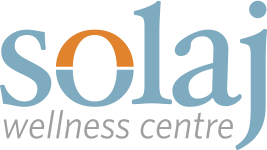Have you ever been stuck in bed or on the couch, unable to move because your back hurt so much? Most of us have experienced back pain at one point or another in our lives.
Sometimes back pain can come on quite suddenly from an injury, however it’s possible for pain to come on without you knowing what caused it. A problem that may have been brewing for some time may show up when you least expect it.
Common Symptoms
- Sore muscles in the low back, buttocks and/or hips
- Shooting pain down the leg
- Difficulty moving around normally
- Trouble standing straight
- Pain may get worse with sitting or standing
Back pain is most often a result of inflamed and swollen joints, sore muscles, or damage to the discs, usually that has developed over time. Poor posture, sitting for prolonged periods, lifting a heavy object or excessive physical exertion can all contribute to upper and lower back pain.
Internal Scar Tissue
Internal Scar Tissue is a thick, tough, fibrous material that the body creates to quickly repair a damaged tissue such as muscles and tendons. It can build up in any area of the body where there has been internal and/or external damage. Internal Scar tissue is a very common cause of recurring or chronic pain after sport or work injuries, after surgery and it also often intermixes with Osteoarthritis.
Visit our Internal Scar Tissue Page to learn more.Sciatica
Visit our Sciatica Page to learn more.
Soft Tissue Injury
Sacroiliac Joint Dysfunction
Osteoarthritis or Degenerative Disc Disease (Cervical Spondylosis)
Visit our Osteoarthritis page to learn more.
Disc Herniation (Slipped Disc)
This can cause symptoms to radiate to the buttocks, thigh, lower leg and/or foot, such as pain (may be dull achy or stabbing/shooting), numbness, tingling or weakness.
Stenosis
Facet Joint Syndrome
Cold Laser Therapy Back Pain Treatment: Step 1
Cold Laser Therapy Back Pain Treatment: Step 2
Cold Laser Therapy Back Pain Treatment: Step 3
Removes Internal Scar Tissue: Inhibits and removes Internal Scar Tissue that naturally forms after an injury and can cause discomfort and a delay in healing.
Regenerates Muscle Tissue: Transfers light energy to the affected cells of muscle, regenerating and strengthening damaged muscle tissue to prevent future injury.
Activates Cartilage Production: Promotes the natural cartilage growth process by increasing the production of cellular energy (ATP).
Accelerates Bone Repair: Simulates the bone cells to replicate and produce new healthy bone tissue.
Nerve Regeneration: Helps damaged nerves to recover by growing the neural network and repairing vital insulation around the nerve.
Stimulates Blood Flow: Increases the delivery of oxygen and nutrients required for healing of the affected cells.
Visit our Cold Laser Therapy Page to learn more about how the treatment works.
Clinical Study
The following clinical study is based on the results of BioFlex Cold Laser Therapy with degenerative disc disease:
